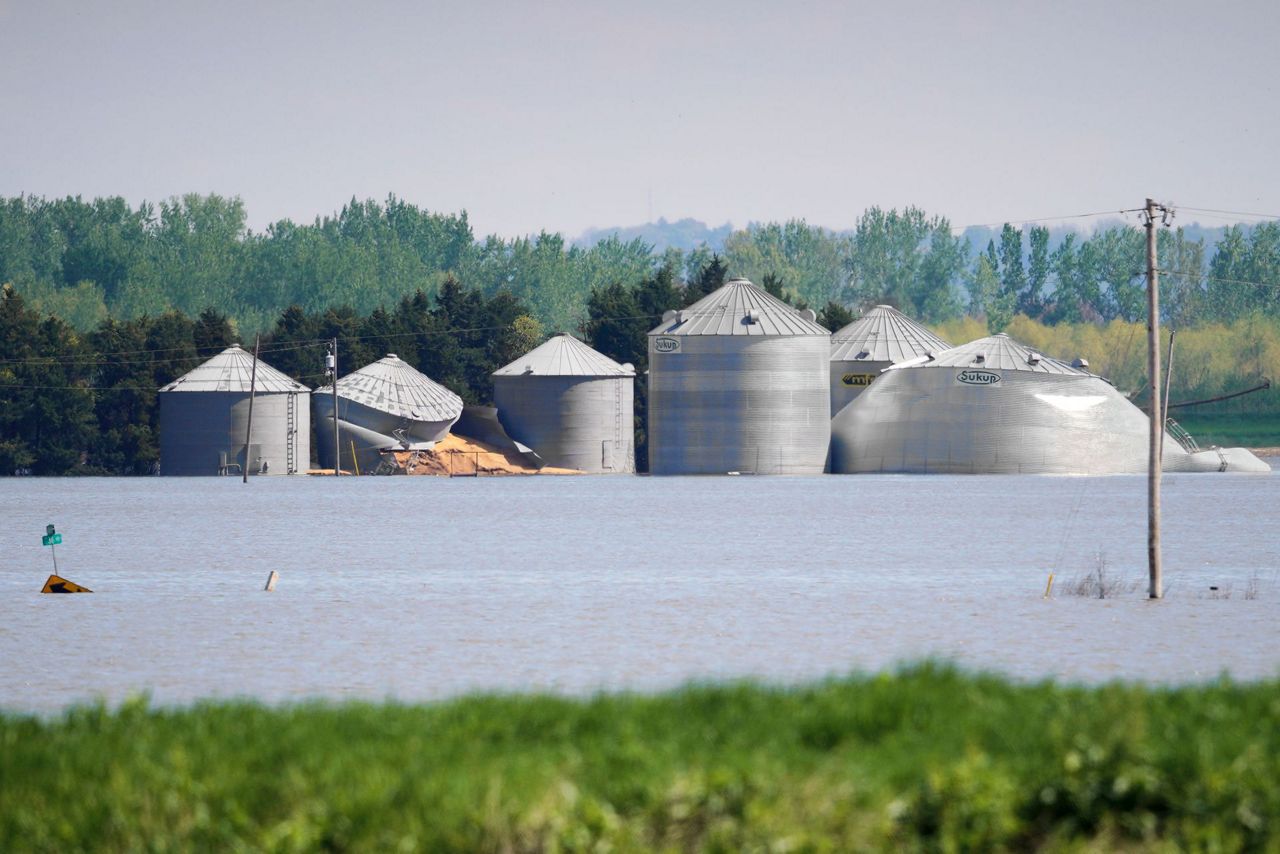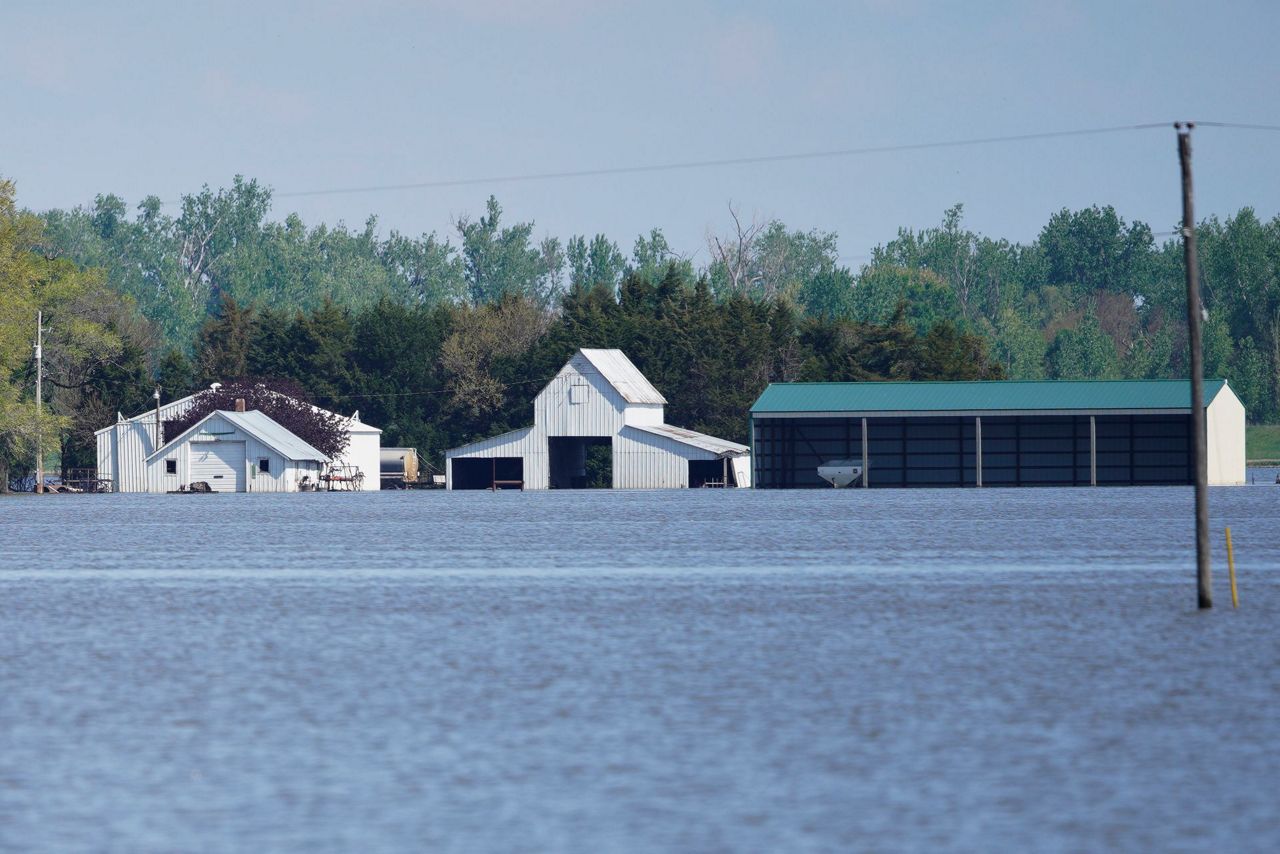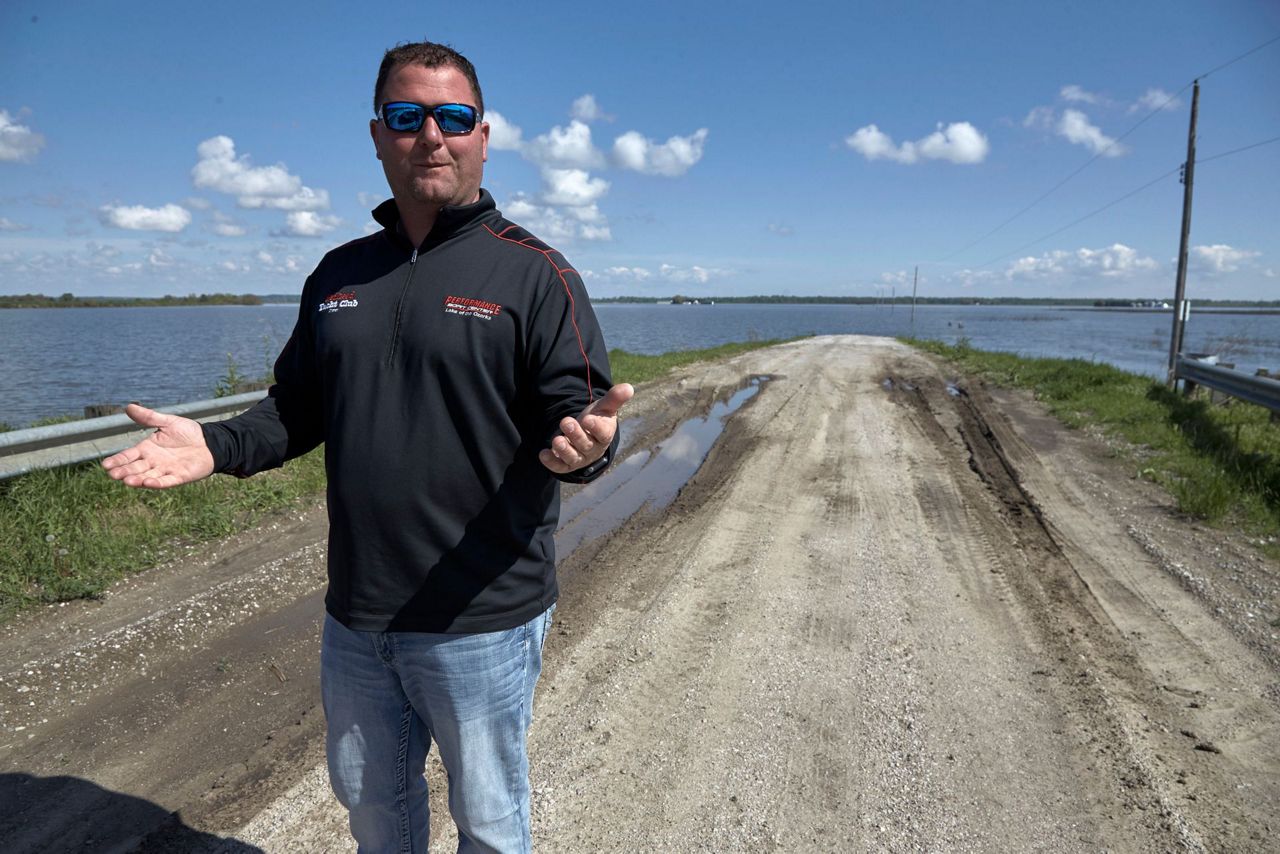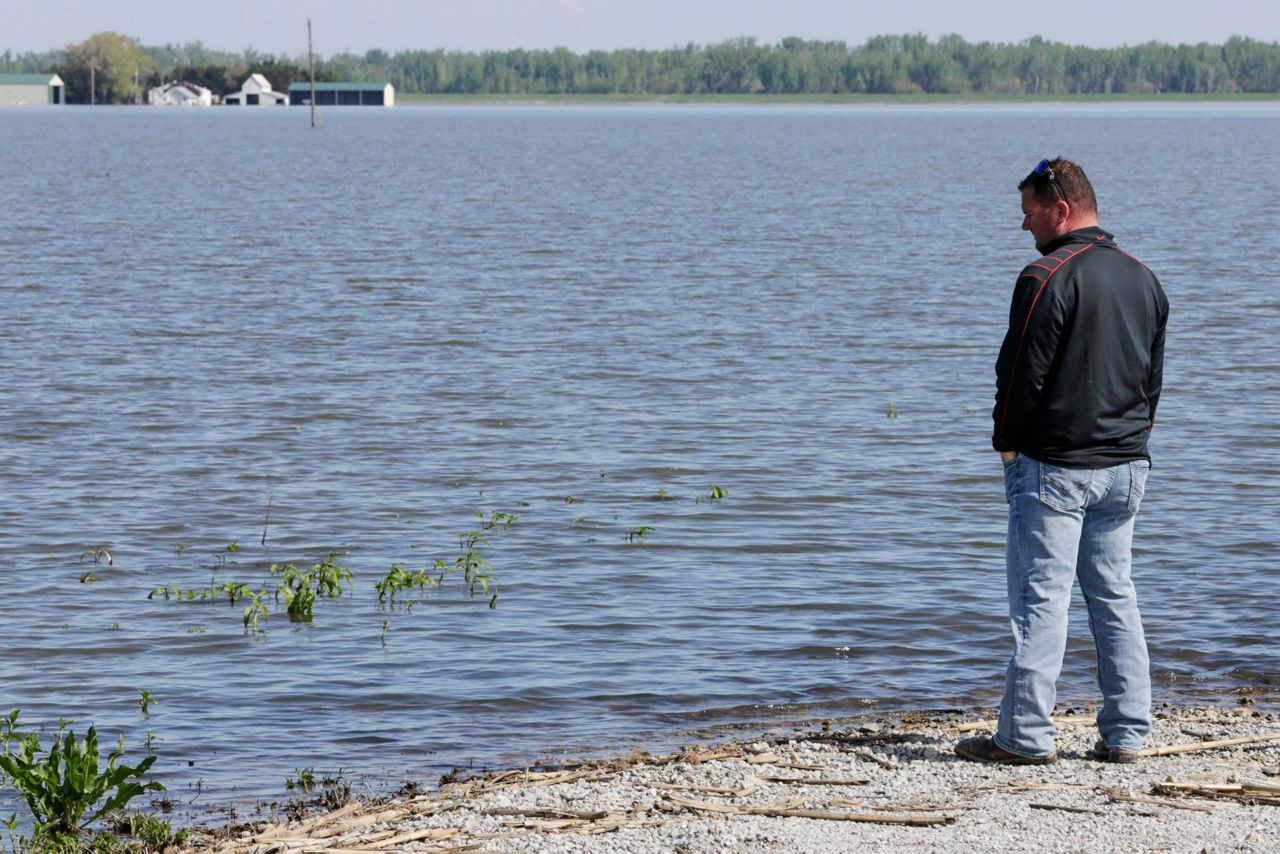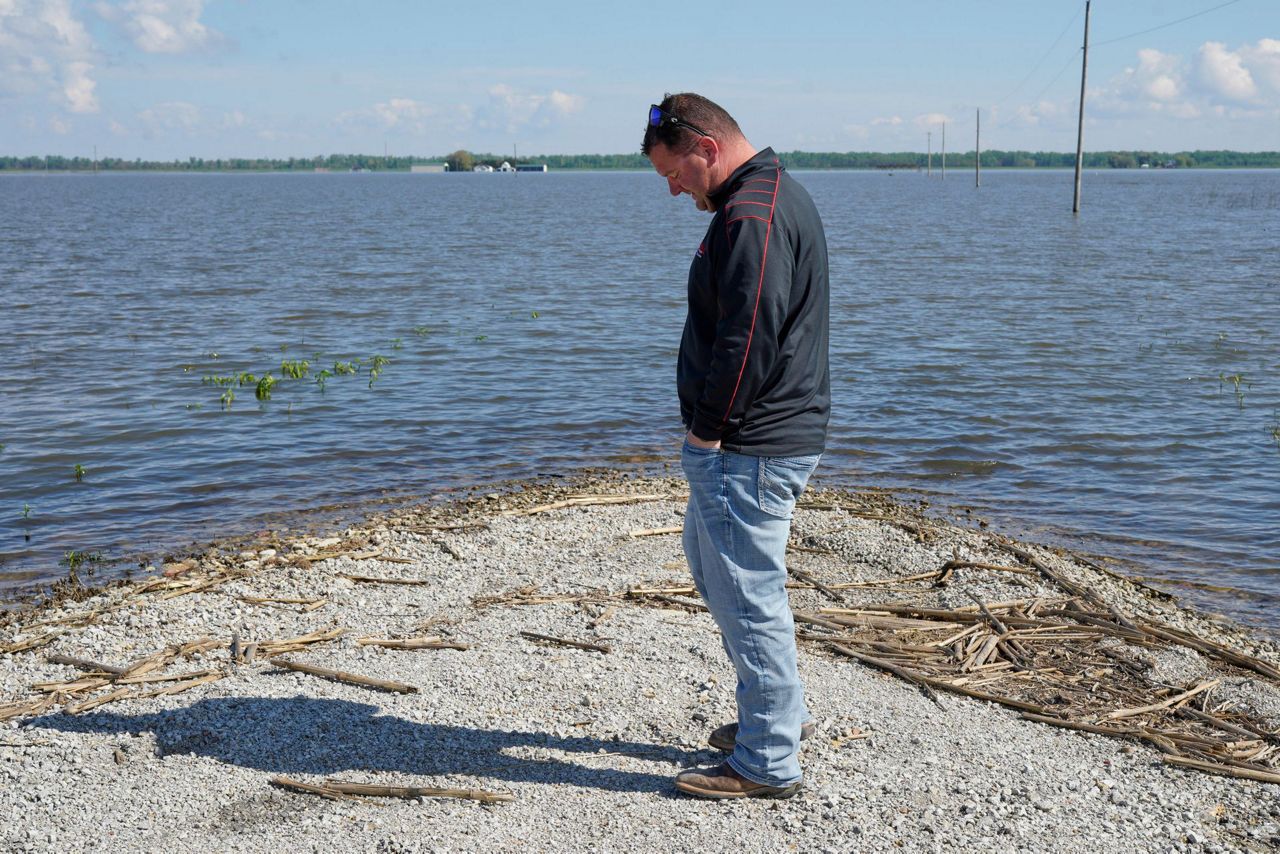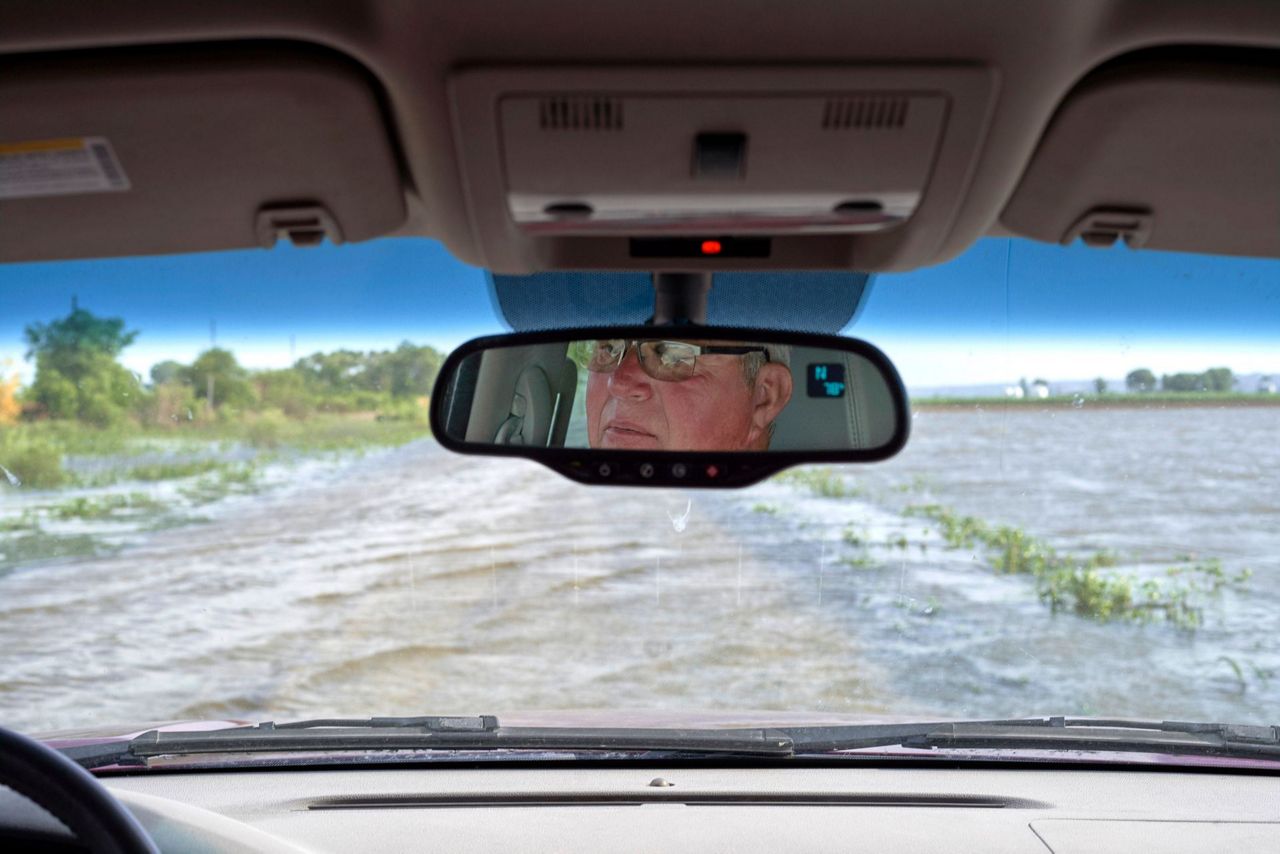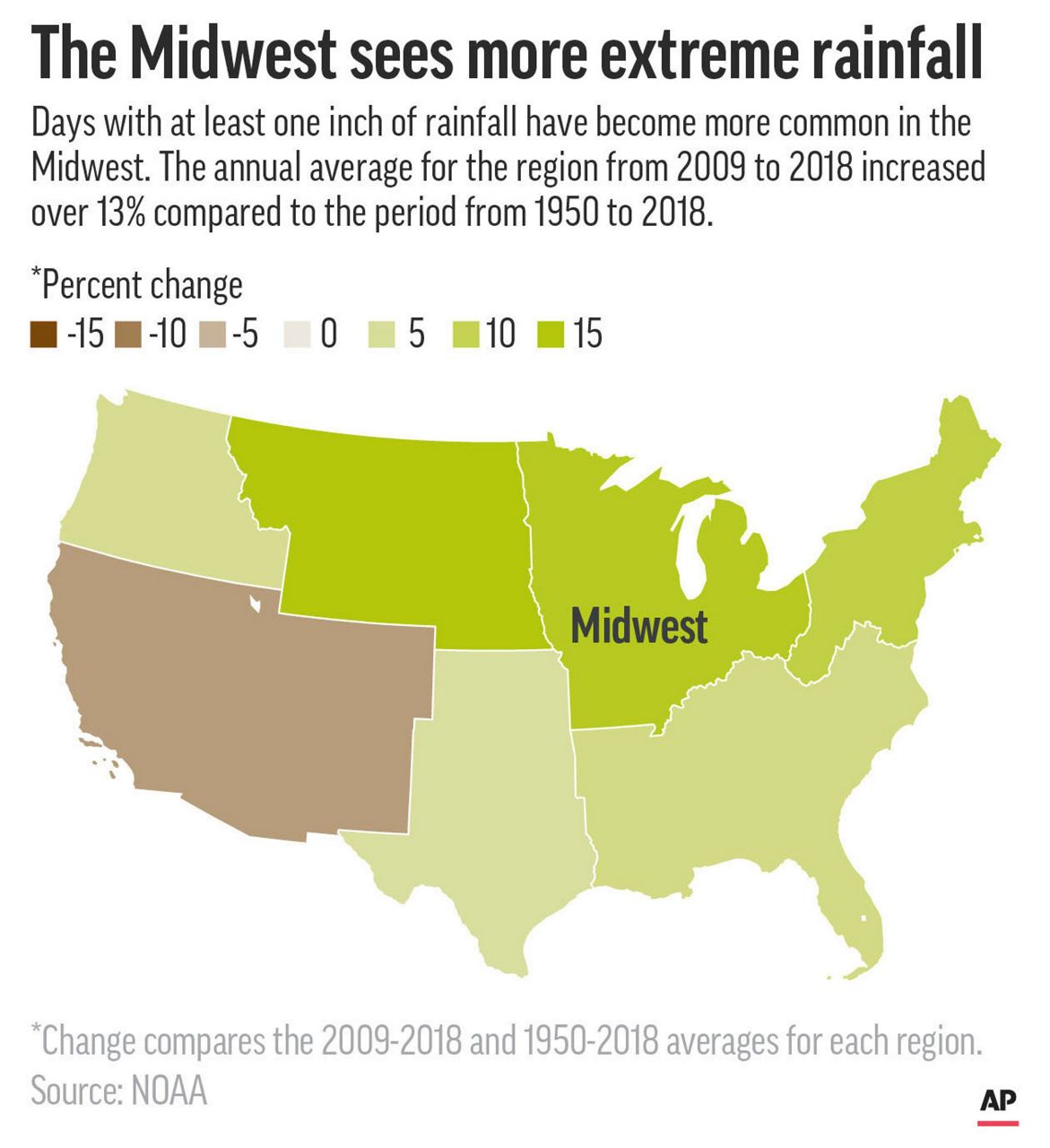CRESCENT, Iowa (AP) — Frogs, carp and bugs thrived all summer in murky floodwaters where Gene Walter should have planted corn and soybeans. Last year’s ruined crop spilled from metal storage bins that burst nine months ago when the Missouri River surged through two levees near his southwest Iowa farm.
Like many in the water-weary Midwest, Walter doesn’t know if climate change was responsible for the second major flood in nine years. Or the increasingly frequent torrential rains that dump more water in an hour than he used to see in days.
Even so, “we kind of feel like it’s the new normal,” said Walter, who lost 46,000 bushels of corn and soybeans. “You can’t rely on anything. You can’t build anything. You can’t do future planning ... the uncertainty is the thing that is really bad.”
This year’s devastating losses are forcing tough decisions about the future of farming in America’s flood plains, even among those skeptical of climate change and humans’ role in it.
Farmers who lost billions of dollars in grain, livestock, equipment, structures and unplanted crops are wondering whether they should — or can — return to the fertile bottomlands next year.
The U.S. Army Corps of Engineers must determine how many damaged levees can be rebuilt but says it won’t be all of them. More than 50 levees were breached on the Missouri River alone, taking thousands of acres out of production.
And with the ground still soggy heading into winter, experts say the stage is set for more flooding next spring.
“A lot of this ground won’t be put back into production,” said Brett Adams, a Peru, Nebraska, farmer who saw 2,000 acres (809 hectares) — 80% of his land — submerged in up to 12 feet (3.7 meters) of water. “I’ve seen it first-hand up and down the river — land is so tore up from flooding that some of it is completely ruined.”
Adams lost over 100,000 bushels of corn and a half-million dollars in potential income after six storage bins burst. But he bristles when people ask why he farms in an area that could flood.
“Because it never flooded before,” Adams tells them, noting that a levee built in 1950 kept his farm dry during major floods in 1993 and 2011.
It’s very difficult to directly tie this year’s flooding — or any single weather event — to climate change. But the flooding comes as “we’re seeing big rain and even bigger snows that are consistent with what we will see in a warming world,” because a warmer atmosphere delivers more water to storm systems, said National Oceanic and Atmospheric Administration climate monitoring chief Deke Arndt.
The number of heavy rain events has increased throughout much of the U.S., including the Midwest, where the days with at least one inch of rain averaged 13% higher from 2009 to 2018 than the long-term average dating to 1950, according to NOAA.
In Missouri, the number of annual 4-inch (10.2-centimeter) or greater rainfalls was 58% higher than the long-term average. In Iowa, the increase was 31% and in Nebraska it was 23%.
There also will be more severe droughts, experts say, while rains will be more intense, with more water falling in a shorter period. What's more, the greatest increase in rainfall is occurring in the fall, when farmers are trying to harvest.
The unpredictability “ends up being really bad news for farms,” said Jeffrey S. Dukes, an ecologist who directs the Climate Change Research Center at Purdue University.
___
Heavy rains and flooding kept farmers from their fields in more than a dozen states this year, the wettest on record through October in the contiguous U.S., and breached levees along major waterways that included the Arkansas and Mississippi rivers.
On the Missouri, the disaster unfolded after a blizzard was followed by heavy rain that fell on the snow and frozen ground. Most of the runoff came from tributaries without levees or dams, so the Army Corps had no way to slow the surge and little time to warn farmers.
“It just completely overwhelmed the levees downstream,” said Matthew Krajewski, chief of the readiness branch in the Corps’ Omaha District.
Experts say heavy rain in 2018 set the stage for the floods because the soil was saturated as winter started.
Now the situation is worse than this time last year because heavy rain fell all summer and into the fall, preventing the soil from drying out, said Kevin Low, a hydrologist at the Missouri Basin River Forecast Center.
“The setup is extremely bad,” he said, noting most levees have not been repaired. “There is nothing we can do but watch and wait.”
Some areas along the Missouri were above flood stage more than 270 consecutive days, according to hydrologist David Pearson at the National Weather Service’s Missouri Basin River Forecast Center.
Julius Schaaf believes it’s the Army Corps’ job to protect farmland like his, though he concedes there is a legitimate question whether farmers should remove structures from flood plains.
“The levees and dams ... kind of gave us a false sense of security,” said Schaaf, whose farms near Randolph, Iowa were flooded this year. “We went ahead and made an investment because the government said, ‘We’ve got this river tamed and you folks are good.’”
But the Corps says its priority is to protect people and infrastructure such as highways, railroads and towns — not agricultural land.
The agency is conducting cost-benefit assessments to determine which levees can and should be rebuilt. “There is a good chance” that it won’t be all of them, said the Corps’ Krajewski, noting that funding is limited.
Some farmland along the Missouri could be flooded for years awaiting repairs and would have to be cleared of silt and debris before being planted again.
The decision to abandon farmland is complicated by the fact that catastrophic floods are unpredictable, said Ken Kunkel, a NOAA researcher.
”But it seems to me, like in lot of situations when you’re in a flood plain, expecting to be completely protected by anything probably is unwise and becoming unwiser as time goes on,” Kunkel said.
___
Some experts say U.S. agriculture policy discourages farmers from adopting practices that could help reduce losses to extreme weather.
Conservation programs that pay farmers to set aside land, including in flood plains, are underfunded, experts say. The taxpayer-subsidized crop insurance program effectively discourages farmers from planting more than a couple of crops and gives them an incentive to plant on risky land because some losses would be recouped.
It’s also easier to obtain loans for certain crops, such as corn, wheat and soybeans in the Midwest, said Ben Lilliston, rural strategies and climate change director at the Minnesota-based Institute for Agriculture & Trade Policy. That makes it difficult for farmers to rotate several crops, which preserves soil health and helps weather floods and drought.
After a crippling year, many farmers will need to return to low-lying fields if they can.
Walter, the Iowa farmer, considered abandoning 750 acres (304 hectares) of bottomlands, but it was a huge chunk of the 1,200 acres (486 hectares) he farms with his son.
So they’ll continue farming it once the levees are repaired, he said.
But farmers need to ask themselves if the risk of farming in flood plains is worth the reward, said Dukes, the Purdue ecologist.
“Is it worth the great yields you might get in great years versus the total loss in other years?” he said. “Do taxpayers want to be subsidizing the losses?”
___
Webber reported from Chicago.
___
Read more stories on climate issues by The Associated Press at https://www.apnews.com/Climate
___
Follow Webber and Funk on Twitter: https://twitter.com/twebber02 https://twitter.com/Funkwrite
Copyright 2019 The Associated Press. All rights reserved. This material may not be published, broadcast, rewritten or redistributed.



